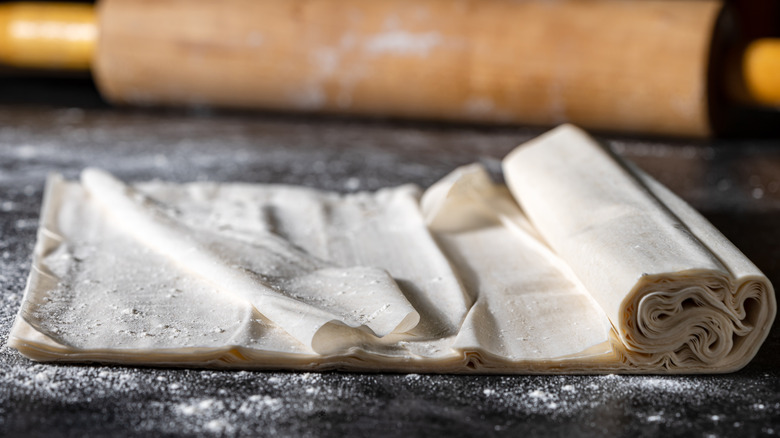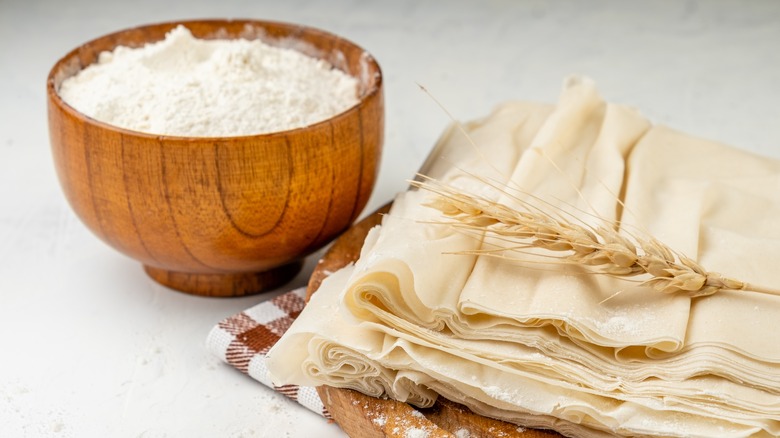The Best Flour To Use When Making Homemade Phyllo Dough
Phyllo or filo dough is an unleavened dough that comes in many thin layers, giving Middle Eastern and Balkan pastries a fragile, buttery crust. If you've ever had baklava, it's a dessert made typically from a dense paste of nuts and sugar sandwiched between layers of phyllo dough.
What separates dishes like baklava and burek from other pastries is the thin phyllo dough. Phyllo dough is marvelous in composition, with sheets as thin as tissue paper neatly packed on top of one another, resulting in countless layers of light crunch. Because of the work involved, many who make dishes like baklava, borek, and spanakopita, buy premade phyllo dough from the grocery store.
Phyllo dough is almost like puff pastry; it's usually available for purchase since the intricate pastry is challenging to make at home. However, you can make suitably layered phyllo dough at home with patience and the right ingredients. While homemade puff pastry relies on cold butter to create gaps between each sheet of dough, phyllo pastry comes down to the type of flour you use. The raw dough should be so light that it is nearly translucent yet strong enough to remain intact. Aside from rigorous rolling and flouring, you must use a special kind of flour to achieve the perfect phyllo dough texture and appearance.
Use bread flour for its high amount of protein and gluten to keep the dough together
Although phyllo dough is an unleavened pastry sheet, it needs to be made with bread flour. Most people use bread flour for bread that's been leavened with yeast. Bread flour contains a high protein content, which is responsible for the gluten development in the dough. While bread flour is typically reserved for bread that has chew and a kind of elasticity to them, it is also the best flour for phyllo dough. Given the fragility of phyllo dough, the flour must have enough protein to keep the dough intact as you stretch it into a large sheet. If you were to use any other flour, like all-purpose flour, the thin dough would be more prone to ripping or simply not keeping its shape.
Furthermore, bread flour gives phyllo dough its signature crunch once baked. It is possible to use all-purpose flour for phyllo, but the crunch will be less prominent. If you go even further down toward lower protein flours like cake flour, the crumb will result in a more sturdy texture like the crust of a pie.
While the puff pastry is laminated with cold butter, phyllo dough keeps its layers separate with strong gluten bonds. So if you ever want to take on the challenge of making fresh phyllo dough for your baking needs, make sure to use bread flour. Whether you're having a savory spinach spanakopita or a syrupy baklava, the appeal of these dishes is the delectably thin, crisp sheets of phyllo dough — thanks to bread flour.

